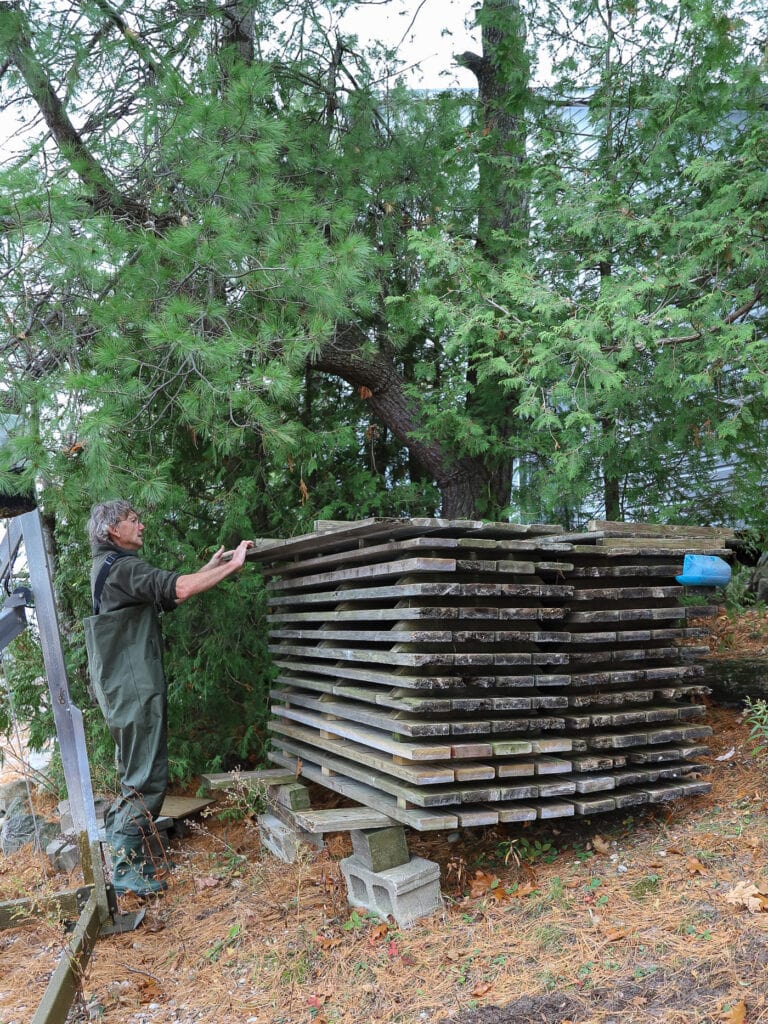DIY Dock Removal: A Comprehensive Guide to Taking Down Your Dock
Post Summary: This post is all about the dock removal process, how to take a dock down by yourself, and some tools and equipment that can help make the annual process a little easier.

While summers by the water can be incredibly enjoyable, but when the time comes to remove your dock, it can feel like a daunting task. Whether you’re looking to replace it, store it for the winter, or simply remove it for maintenance, taking down a dock is a manageable DIY project. In this guide, we’ll walk you through the process of dock removal, providing you with essential tips and information along the way.
Keep reading to learn more about the dock removal process, how to take a dock down by yourself, and some tools and equipment that can help make the annual process a little easier.
Dock Removal 101
1. Assess the Situation:
Before diving into dock removal, it’s crucial to assess the current condition of your dock. Check for any damage, loose components, or signs of wear and tear. This assessment will help you plan the removal process and determine if any repairs are needed before reinstallation.
2. Gather Your Tools:
To efficiently remove your dock, you’ll need a set of essential tools. Here’s a list of items you might require:
- Dock Removal Kit: Consider purchasing a dock removal kit, which typically includes a winch, cables, and other necessary equipment.
- Boat Lift Removal Tool: If your dock includes a boat lift, you may need specialized tools to disconnect and remove it safely.
- Dock Pole Removal Tool: For docks with pilings, a dock pole removal tool can make the job much more manageable.
- Basic Hand Tools: Screwdrivers, wrenches, pliers, and a hammer will be needed for various tasks.
3. Safety First:
Safety should always be your top priority. Ensure that you have the appropriate safety gear, such as gloves, and sturdy footwear. Additionally, be mindful of the weight and balance of the dock components to avoid accidents.
4. Disconnect Utilities:
If your dock is equipped with electrical or water connections, disconnect them carefully. This step might require turning off the power and shutting off the water supply to the dock.
5. Remove Accessories:
Take off any accessories or components attached to your dock, such as benches, ladders, or bumpers. Store these items separately to prevent damage or loss.
6. Detach the Dock Sections:
Start by disconnecting the dock sections. Depending on your dock’s design, this may involve removing bolts, screws, or pins. Be sure to keep track of all hardware for reassembly.

7. Boat Lift Removal:
If your dock includes a boat lift, follow the manufacturer’s instructions to safely remove and store it. Use the boat lift removal tool if necessary. I’m sharing the tool that we use to help two of us lift our boat lift onto – and pull it onto shore.
8. Dock Pole Removal:
For docks supported by pilings, use a dock pole removal tool to loosen and extract the pilings. Take your time with this step to avoid damaging the pilings or the surrounding environment.
9. Winch It Up:
If you have a floating dock, a dock removal winch will be particularly useful. Attach the winch to a secure anchor point, and use it to lift and remove the dock sections from the water.
Best Electric Winch
This 4500lb winch is electric, waterproof, and has a wireless remote to help make your dock removal process so much easier.
Check it out >
10. Storage and Maintenance:
Once your dock is removed, carefully clean and inspect all components. Make any necessary repairs or replacements before storing them for the season. Properly store your dock sections to prevent damage and prolong their lifespan.


11. Dispose of Old Docks Responsibly:
If you’re replacing your dock entirely, consider recycling or repurposing the materials to reduce waste. Many areas have specific regulations regarding the disposal of dock materials, so be sure to check local guidelines.
Dock Removal Tools
Removing a dock, such as a floating dock or a boat dock, can be a challenging task that requires the right tools and equipment. The specific tools you’ll need can depend on the type of dock, its size, and the materials used in its construction. Here are some tools and equipment commonly used for dock removal:
- Boat or Watercraft: If your dock is floating or in the water, you’ll need a boat or watercraft to access it. Ensure it’s in good working condition and has enough capacity to transport any materials you remove from the dock.
- Pliers or Wrenches: These tools can be useful for loosening and removing bolts, nuts, and fasteners that hold the dock components together.
- Saws: Depending on the dock’s construction, you may need various saws, such as a reciprocating saw, circular saw, or handsaw, to cut through wooden or metal components.
- Crowbar or Pry Bar: These tools are handy for prying apart and disassembling dock sections that are connected.
- Hammer: A hammer can be used to help remove nails, screws, or other fasteners holding the dock together.
- Socket Set: A socket set is useful for removing nuts and bolts securely.
- Rope or Chains: To secure the dock sections or floatation devices while you work on them, you may need ropes or chains to prevent them from floating away.
- Personal Protective Equipment (PPE): Safety should be a top priority. Wear appropriate PPE, including gloves, eye protection, and a life jacket if you’re working on or near the water.
- Power Drill: If there are screws or bolts that need to be removed, a power drill can speed up the process.
- Winch or Come-Along: For larger or heavier dock sections, a winch or come-along can assist in lifting and moving them.
- Floatation Devices: If the dock sections need to be floated or transported to another location, you may need inflatable buoyancy devices or barrels to keep them afloat.
- Cutting Torch: If your dock has metal components that need to be cut, a cutting torch can be a useful tool. Ensure you have the necessary safety gear and follow safety precautions when using a torch.
- Heavy Machinery: For extremely large or complex dock removals, you might need heavy machinery such as a crane or excavator. Hiring professionals with the appropriate equipment may be necessary in such cases.
Best Cordless Drill
DEWALT Cordless Drill is one of our favorites and has over 45k reviews on Amazon. Comes with everything you see in the photo here.
Check it out >
Remember that dock removal can be physically demanding and potentially hazardous work, especially if it involves water. It’s essential to prioritize safety and, if necessary, seek professional assistance for a safe and efficient removal process. Additionally, check with local authorities and environmental agencies for any regulations or permits required for dock removal, especially if your dock is in or near a body of water.
Dock removal might seem like a challenging task, but with the right tools, safety precautions, and a systematic approach, it can be a manageable DIY project. By following this guide, you can safely remove your dock, whether it’s for seasonal storage, maintenance, or replacement. If you’re unsure about any aspect of the process, don’t hesitate to seek professional help. Now, go ahead and enjoy your waterfront property, knowing you have the knowledge to take down and put up your dock with ease.












